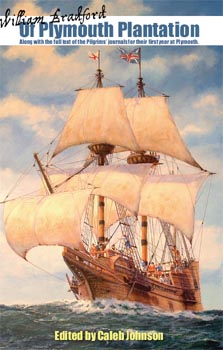The English and other early Europeans to arrive in America frequently speculated on the origins of the Native Americans. In 1637, Thomas Morton, an attorney from England who had spent many years in America on several different occasions, wrote: "it hath been the opinion of some men, which shall be nameless, that the Natives of New England may proceed from the race of the Tartars, and come from Tartaria [the wilds of Asia] into those parts over the frozen sea." Morton thought this an absurd idea because there would be no food or firewood to sustain life. More probable, he believed, was that the Indians descended from the scattered Trojans, who dispersed after the Trojan War. Other Englishmen speculated the Indians must be descended from one of the lost tribes of Israel. Archaeologists today, based on both archaeological and genetic research, believe that the Native Americans arrived in America around 12,000 years ago, in one of several waves of immigration, with the main wave coming across the land bridge in the Bering Strait during the most recent ice age. Recent genetic research has shown that Native Americans are descended from the Mongoloid peoples of central Asia and Siberia, although a few in Central and South America appear to have genetic ties with the Polynesian islands of southeast Asia.
The Wampanog and other Algonquian peoples first began settling in New England about 9,000 to 12,000 years ago, where they were primarily a nomadic hunting and gathering culture. By about 1000 AD, archaeologists find the first signs of agriculture beginning to appear, in particular the corn crop, which became an important staple, as did beans and squash.
In 1525, Giovanni da Verrazano, an Italian sailing under the French flag, explored much of the coastline from Virginia through New England. He was one of the earliest European explorers that stopped along the coastline of the Wampanoag people at Narragansett Bay. Verrazzano records that the Wampanoag came aboard the ship fearlessly, including two "kings" of forty and twenty years of age. Verrazzano noted that the Wampanoag were "very charitable towards their neighbors".
Very few voyages were made to the region for the next three-quarters of a century, but beginning in the very early 1600s, European voyages to New England picked up greatly. In 1605, English sea captain George Weymouth traveled along Cape Cod, where he captured five Indians to take back with him to England. Frenchman Samuel de Champlain made a map of Plymouth Harbor in 1613 (picture at left). The river seen at the top is Town Brooke at Plymouth, and several villages and cornfields can be seen. A group of Wampanoag in a canoe and along the shore can also be seen. A year later, Captain John Smith traveled into Cape Cod, and made his own map of New England. When John Smith left, one of the sea captains remaining behind was Captain Thomas Hunt, who decided to take 24 Indians back to Spain to sell as slaves. He lured them aboard his ship pretending to trade for beaver skins, and then captured them onboard. They were bound and sailed to Spain, where he managed to sell a few before some local Spanish friars took custody of the remaining Indians. One of those who was captured was Tisquantum ("Squanto"), would would be returned to New England in 1618 with another English captain, Thomas Dermer, before making acquaintance with the Pilgrims in 1620.
When the Pilgrims arrived in 1620, they found that much of the former Wampanoag towns had been decimated by a plague that spread through the population in 1617 and 1618. Entire villages, including Tisquantum's Patuxet, had been wiped off the map. The sachem of the Wampanoag at the time, Massasoit, resided near what is today Warren and Bristol, Rhode Island. Each village under him had its own leader, many of whom the Pilgrims encountered during their early explorations:
Aspinet. The leader at Nauset, residing on Cape Cod in the region from perhaps around modern-day Orleans and Eastham up to Truro and Provincetown.
Iyanough. The leader at Cummaquid, residing on Cape Cod in the area around what is now Barnstable.
Corbitant. The leader at Nemasket, in the vicinity of modern-day Middleboro.
Obbatinewat. The sachem of Shawmut, in the vicinity of Boston.
Three Wampanoag men were actively involved with the Pilgrims in early Plymouth, acting as ambassadors, translators and advisors: Tisquantum, Hobomok, and Tokamahaman.





